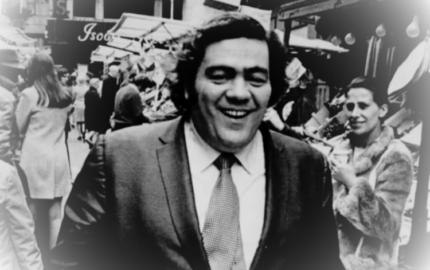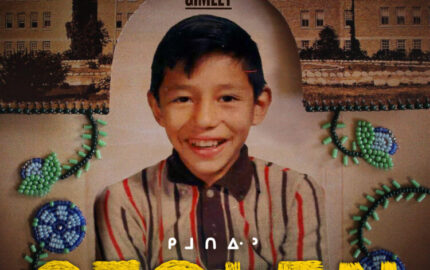An ambitious effort to present working-class women in down-at-heel Troy, N.Y., “Women of Troy” brings the hard life front and center. The project is the first installment of In Verse, which bills itself as a collaboration between poets, photographers and radio producers trying to create a new model of storytelling journalism.
“Women of Troy” casts its net in two directions. A forward-looking approach uses poetry and photography to bridge media—from Studio 360 to the Virginia Quarterly Review (VQR) and Vimeo. Yet the project pays tribute to the past, tapping ancient literature and old narrative forms to build a story cycle.
 As poet Susan B.A. Somers-Willett notes, “Women of Troy” echoes Euripides’ play “The Trojan Women,” which also depicts women living without their men in a city under siege. Brenda Kenneally’s photos faintly recall FSA Dust Bowl images of the similarly “invisible” poor—but here, the people belong to a place, and after several years of shooting them, Kenneally knows the geography of their town and their lives intimately. Somers-Willett’s poems about the women carry a hint of Walt Whitman embracing the American multitude, but she offers up a band of individuals turned suspicious and defiant in the face of relentless hard work, pregnancy and visits to “The Office of Temporary Assistance.”
As poet Susan B.A. Somers-Willett notes, “Women of Troy” echoes Euripides’ play “The Trojan Women,” which also depicts women living without their men in a city under siege. Brenda Kenneally’s photos faintly recall FSA Dust Bowl images of the similarly “invisible” poor—but here, the people belong to a place, and after several years of shooting them, Kenneally knows the geography of their town and their lives intimately. Somers-Willett’s poems about the women carry a hint of Walt Whitman embracing the American multitude, but she offers up a band of individuals turned suspicious and defiant in the face of relentless hard work, pregnancy and visits to “The Office of Temporary Assistance.”
 Armed with grant funding, radio producer Lu Olkowski and VQR editor Ted Genoways brainstormed the effort and shepherded it to completion last fall. All told, “Women of Troy” includes magazine poetry, essays about the project, photos taken from Kenneally’s “Upstate Girls” opus, audio slide shows and radio segments blending spoken-word recordings with audio of the subjects themselves.
Armed with grant funding, radio producer Lu Olkowski and VQR editor Ted Genoways brainstormed the effort and shepherded it to completion last fall. All told, “Women of Troy” includes magazine poetry, essays about the project, photos taken from Kenneally’s “Upstate Girls” opus, audio slide shows and radio segments blending spoken-word recordings with audio of the subjects themselves.
In an interview on Transom.org, Kenneally describes both poetry and photography as a kind of “boiling down.” And there is a sense of distillation about the project, whose components, even taken together, depict more than they explain the women’s lives. Olkowski describes a deliberate effort “to not ask why, but to see it, and record it, and present it.” The work stands as an intriguing portrait of the women who are, in the words of Somers-Willet, “the country at war and the city ablaze,” consuming each other and themselves, even as their light and heat sustain Troy.
“Women of Troy” casts its net in two directions. A forward-looking approach uses poetry and photography to bridge media—from Studio 360 to the Virginia Quarterly Review (VQR) and Vimeo. Yet the project pays tribute to the past, tapping ancient literature and old narrative forms to build a story cycle.
 As poet Susan B.A. Somers-Willett notes, “Women of Troy” echoes Euripides’ play “The Trojan Women,” which also depicts women living without their men in a city under siege. Brenda Kenneally’s photos faintly recall FSA Dust Bowl images of the similarly “invisible” poor—but here, the people belong to a place, and after several years of shooting them, Kenneally knows the geography of their town and their lives intimately. Somers-Willett’s poems about the women carry a hint of Walt Whitman embracing the American multitude, but she offers up a band of individuals turned suspicious and defiant in the face of relentless hard work, pregnancy and visits to “The Office of Temporary Assistance.”
As poet Susan B.A. Somers-Willett notes, “Women of Troy” echoes Euripides’ play “The Trojan Women,” which also depicts women living without their men in a city under siege. Brenda Kenneally’s photos faintly recall FSA Dust Bowl images of the similarly “invisible” poor—but here, the people belong to a place, and after several years of shooting them, Kenneally knows the geography of their town and their lives intimately. Somers-Willett’s poems about the women carry a hint of Walt Whitman embracing the American multitude, but she offers up a band of individuals turned suspicious and defiant in the face of relentless hard work, pregnancy and visits to “The Office of Temporary Assistance.” Armed with grant funding, radio producer Lu Olkowski and VQR editor Ted Genoways brainstormed the effort and shepherded it to completion last fall. All told, “Women of Troy” includes magazine poetry, essays about the project, photos taken from Kenneally’s “Upstate Girls” opus, audio slide shows and radio segments blending spoken-word recordings with audio of the subjects themselves.
Armed with grant funding, radio producer Lu Olkowski and VQR editor Ted Genoways brainstormed the effort and shepherded it to completion last fall. All told, “Women of Troy” includes magazine poetry, essays about the project, photos taken from Kenneally’s “Upstate Girls” opus, audio slide shows and radio segments blending spoken-word recordings with audio of the subjects themselves.In an interview on Transom.org, Kenneally describes both poetry and photography as a kind of “boiling down.” And there is a sense of distillation about the project, whose components, even taken together, depict more than they explain the women’s lives. Olkowski describes a deliberate effort “to not ask why, but to see it, and record it, and present it.” The work stands as an intriguing portrait of the women who are, in the words of Somers-Willet, “the country at war and the city ablaze,” consuming each other and themselves, even as their light and heat sustain Troy.


